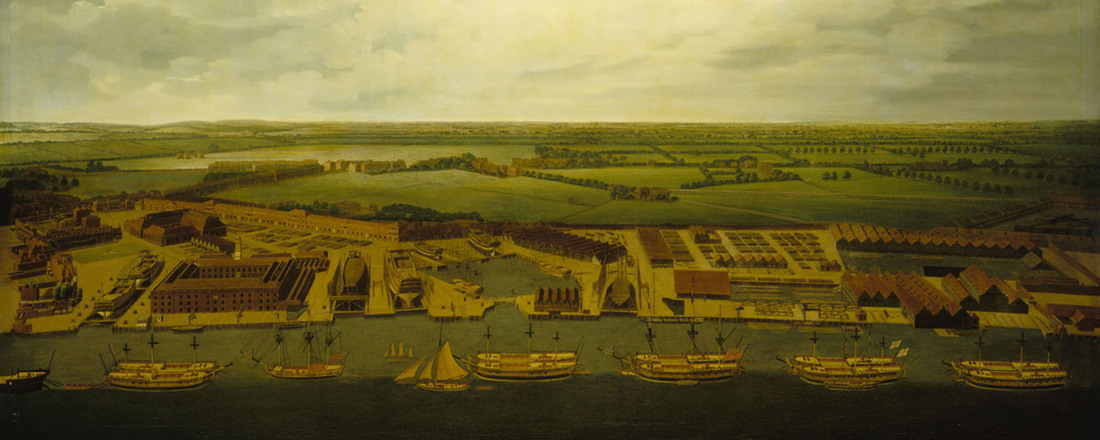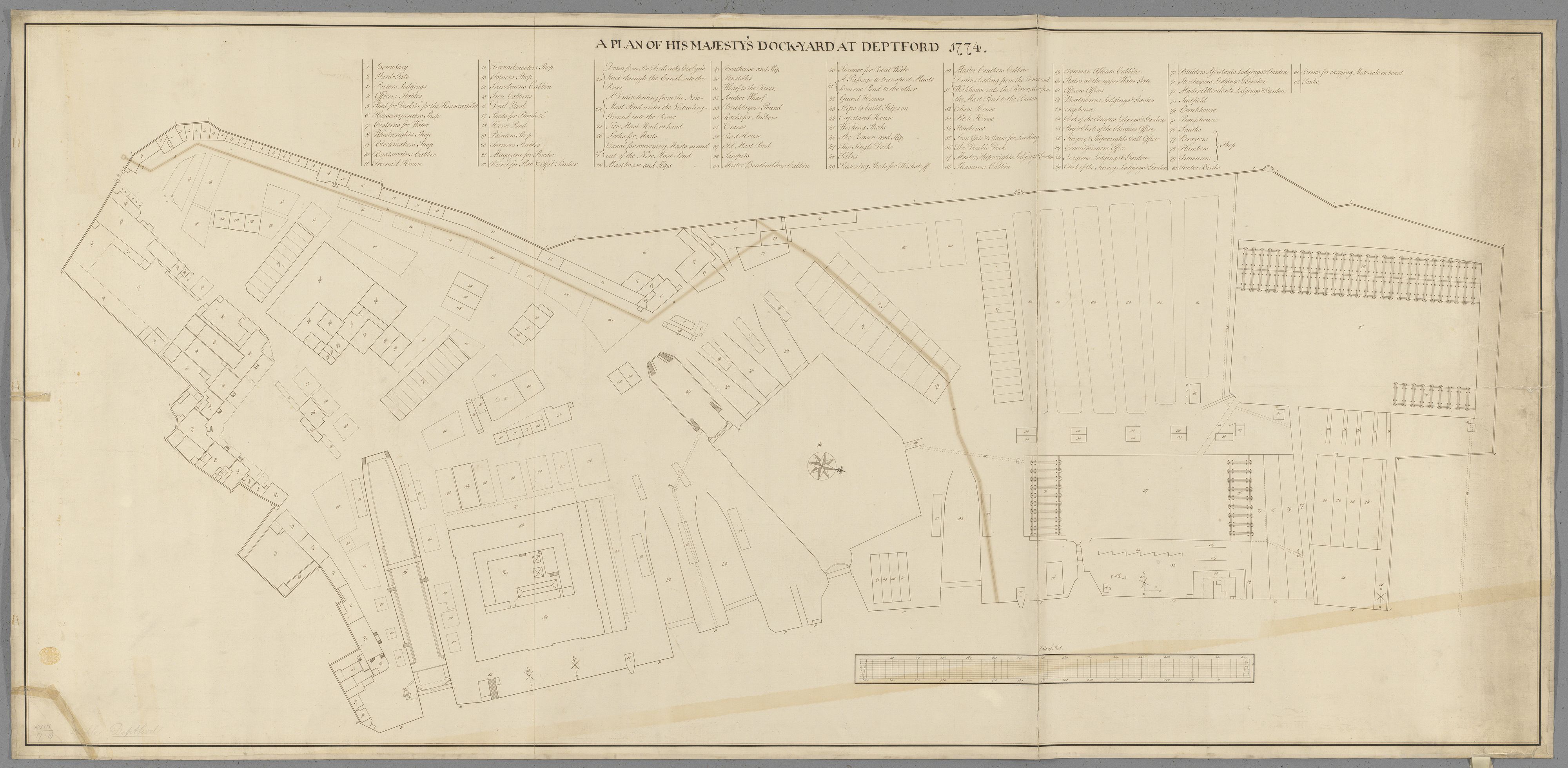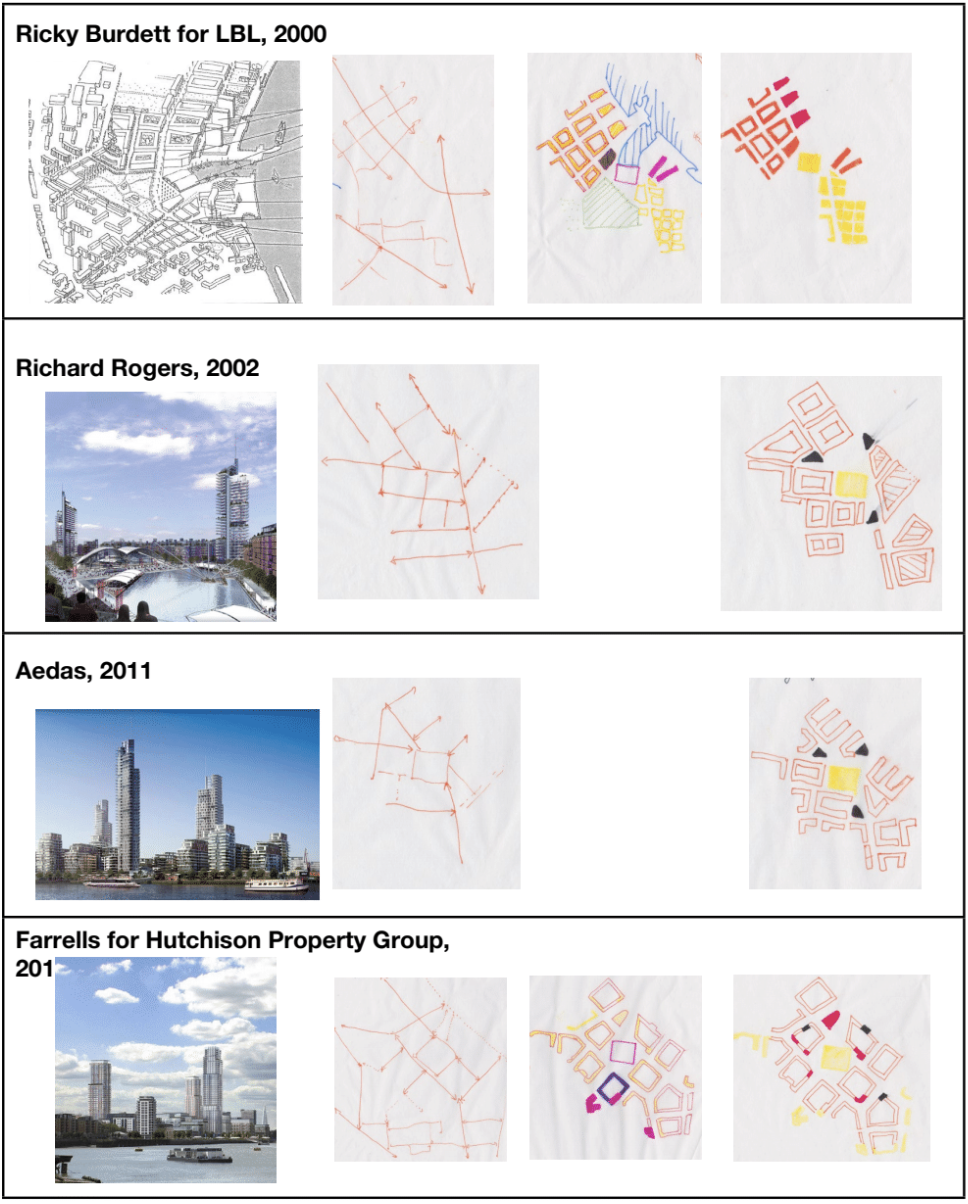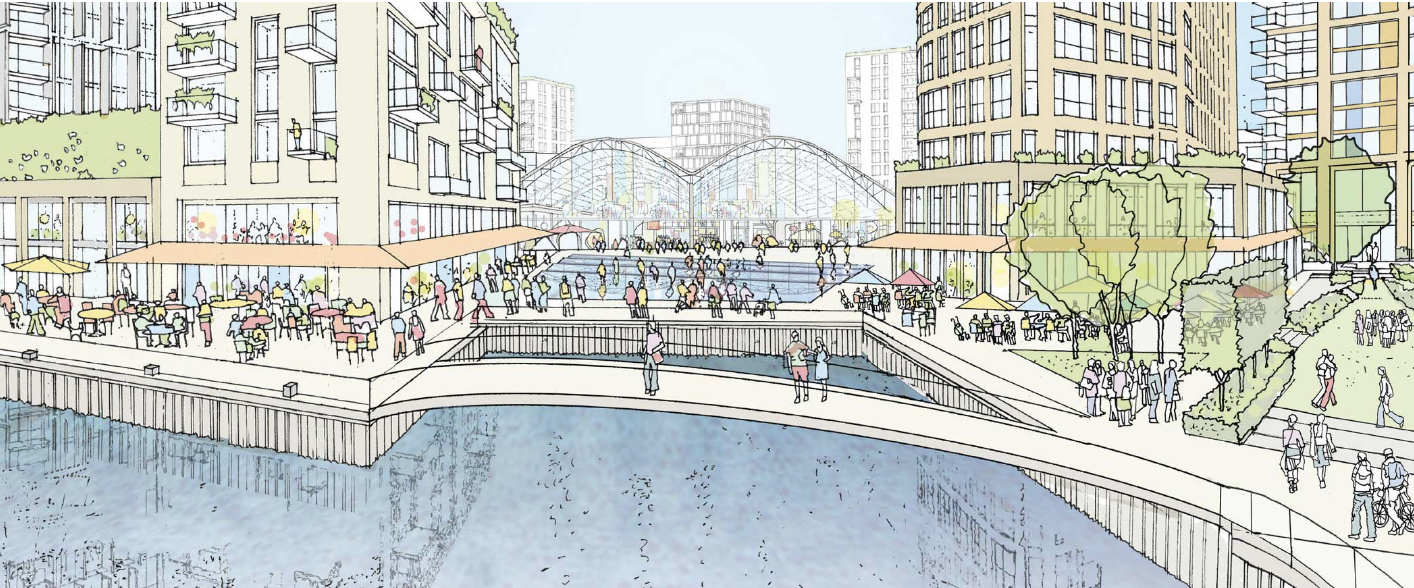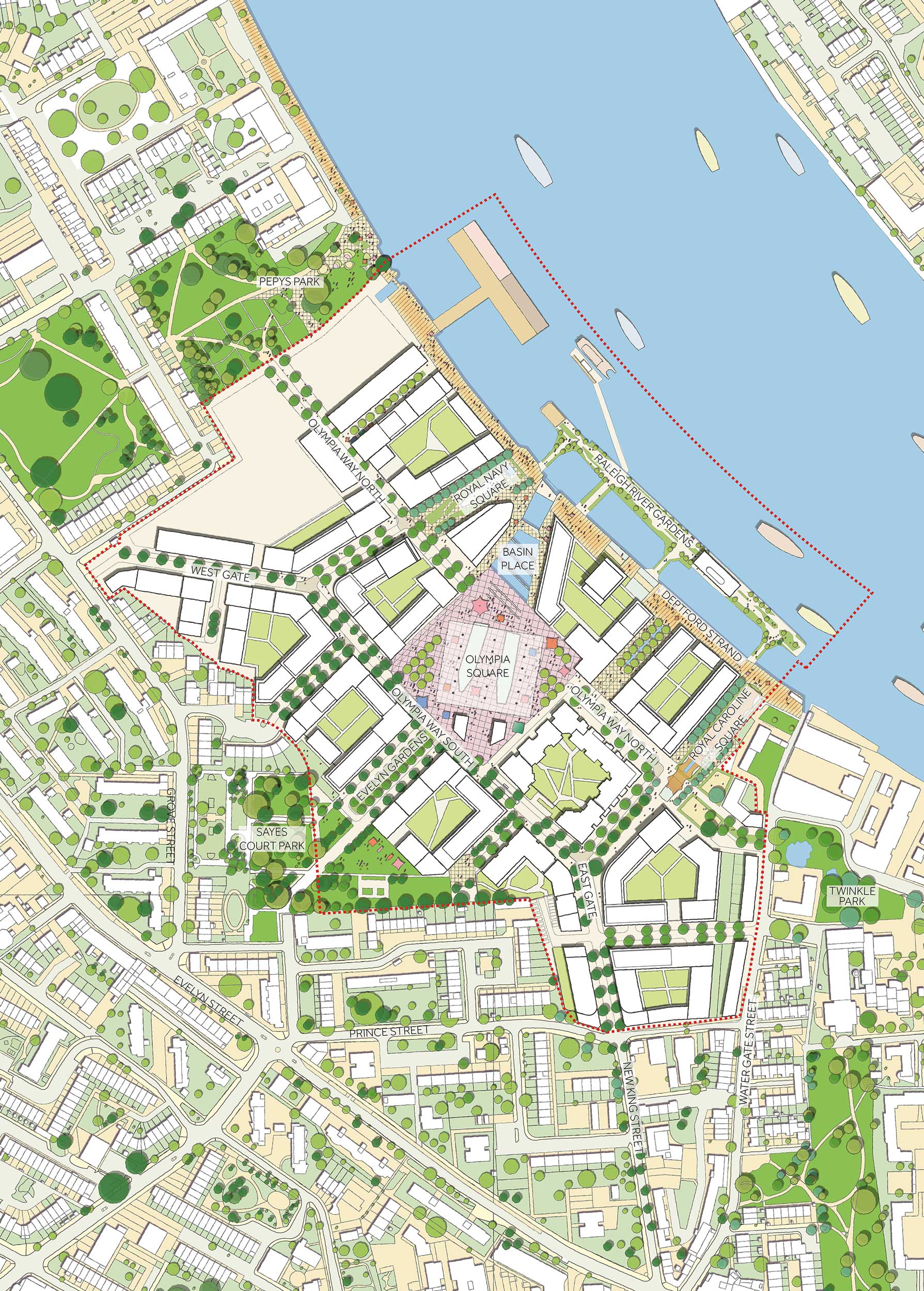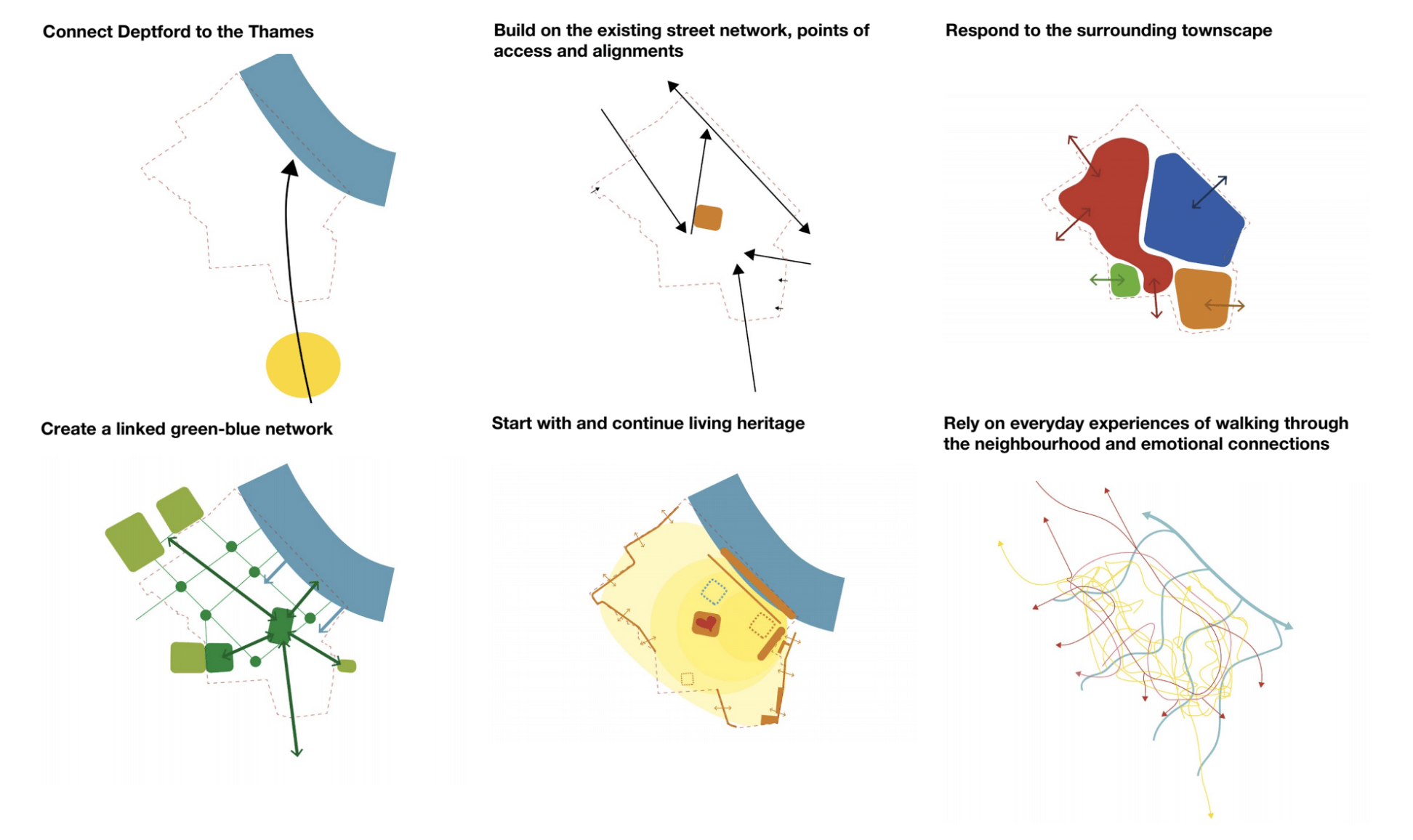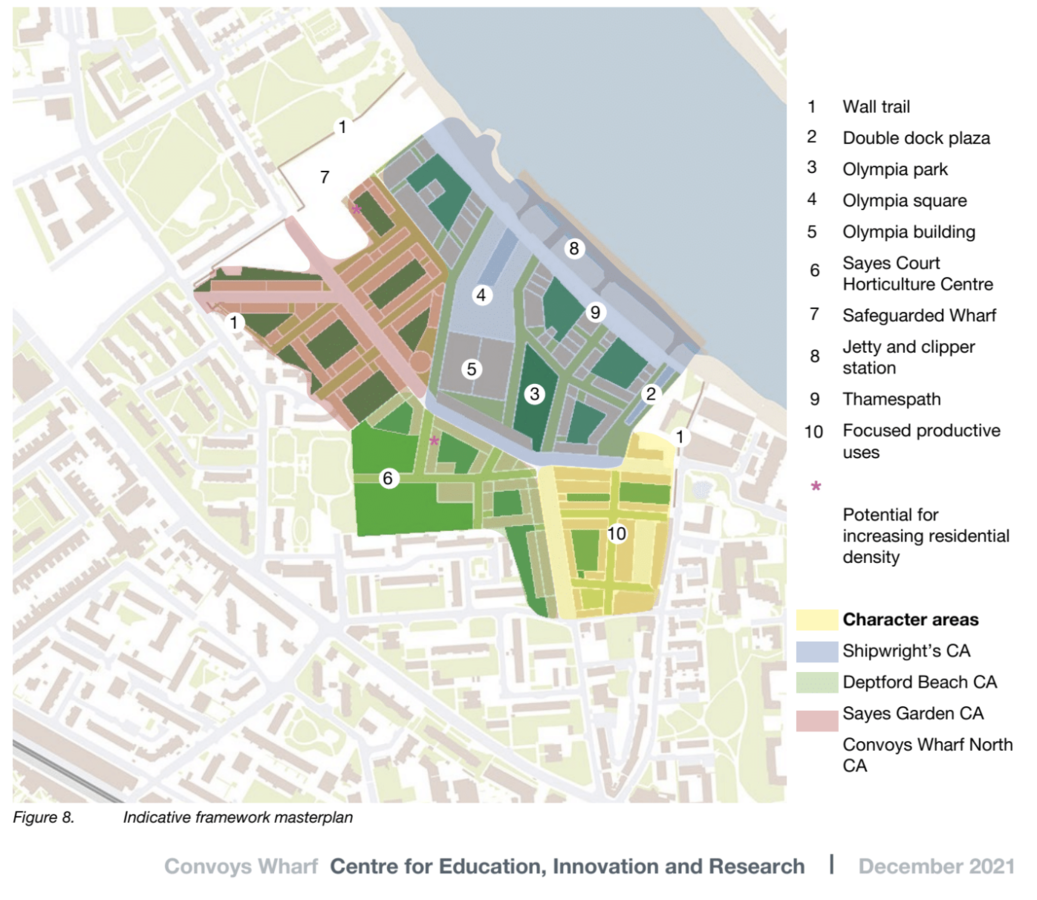Get updates from The Developer straight to your inbox Yes, please!
Deptford docks: “There will be no references left of what’s there”
The Deptford Royal Dockyard has seen off Francis Drake, Captain Cook and Admiral Lord Nelson, but will its history survive the Convoys Wharf redevelopment? Emma Warren reports

The gates to Deptford Docks are wide open. Malcolm Cadman and Marion Briggs from community group Voice 4 Deptford are standing on the threshold of this site which contains huge histories, where Kings and Queens commissioned globally-famous warships and exploration vessels for 350 years.
The Deptford Royal Dockyard is where Francis Drake, Captain Cook and Admiral Lord Nelson departed and arrived. The famous abolitionist Olaudah Equiano was abducted off Deptford Docks and forced to work on Caribbean plantations until he bought his freedom and returned to London. Streams of dockworkers came through the gates every day, not to mention local timber merchants, ironmongers, sail makers and vendors of the myriad items that the country’s foremost dockyard required.
“It’s the history of skill, endeavour and creativity by people themselves,” says Cadman. “It’s world history, and of world historical proportions.”
It’s also the site of a highly contested development. Convoys Wharf gained planning consent back in 2014 when then-Mayor Boris Johnson called in the application and approved it, overruling Lewisham Council.
It’s ‘anywhere design’. It’s not distinct to the location. There will be no references left of what’s there”
Hong Kong company Hutchison Property Group Ltd (HPG) and their UK subsidiary Convoys Properties Ltd (CPL) have owned the site since 2008 when they bought it from News International. Their current plans, which have outline planning consent, include 3,500 properties, 15% of which will be affordable (under Boris Johnson’s definition of 80% of market value) with shared ownership homes and no social housing. It includes three high-rise towers of luxury private apartments, one of which is almost the height of One Canada Square in Canary Wharf.
Voice 4 Deptford (V4D), a trenchantly grassroots group of community placemakers, has been acting to ensure that any development reflects the site’s international histories, responds to the climate crisis and takes the local community into account.
One of many grassroots groups working to convey local people’s views, V4D are doing so in their spare time and without their efforts being officially requested or mandated. They’ve been working alongside Deptford Neighbourhood Action, who have come up with a draft neighbourhood plan, RUSS who are trying to build community-led housing, CASH (the self-explanatory Community Assets for Society and Housing), The Pie and Mash Mutual Aid Group, The Deptford People’s Heritage Museum, and others. There’s national interest too: The University of Sheffield, Greenwich University, UCL, Westminster University and the Bartlett School of Architecture have supported V4D with portfolio work or modelling.
These community groups have in varying degrees and in various ways spent the last 20 years engaged in two mammoth interlocking tasks: attempting to affect what developers do in terms of the built environment and attempting to affect how they do it. The V4D new framework imagines, even at this late moment, when a machine is piling into the ground, how the site could better match the history, environmental agenda and genuine social housing needed by the borough.
The vagaries of the planning system mean that a scheme only has to align with the policies at the time of consent, rather than updating as the system incorporates new requirements, for example around environmental standards, affordable housing or social infrastructure. The unusual time lag between Hutchison Properties Ltd gaining outline consent and starting work has created problems. The Deptford Neighbourhood Plan notes this, describing a ‘unique situation with having a large amount of residential development consented to pre-2016 planning policy standards’.
“The consented development doesn’t create working opportunities, has a lot of car parking and barely any green space or consideration of sustainable drainage when according to the new London Plan it would have to have all of these,” says town planner Herta Gatter.
V4D’s response is a locally-designed framework, led by Gatter, which proposes an alternative future for this storied place, based around the stated aims of The Li Ka Shing Foundation - a philanthropic organisation founded by Li Ka-shing, the billionaire owner of Convoys Wharf’s parent company. In the V4D framework, Deptford dockyard becomes a Centre for Innovation, Education and Research through heritage-led regeneration, with a reduction in residential density and an increase in green and blue infrastructure. V4D say their framework is a “forward-looking and innovative proposal for the 21st Century”.
Gatter ran workshops which led to a set of principles ready to be applied to the current developer plan. “It would respect heritage,” she says of the framework, “and it’s rooted in everyday experience. It isn’t that different from the plan which has outline planning consent. In terms of the layout, for example, it is following similar ideas but puts greater emphasis on responding to the Thames and surrounding cityscape. How it’s really different is that it supports building a strong community, there’s a greater mix of uses, and more green space.”
The Li Ka Shing Foundation did not respond to a request for comment, however its publicly stated ambitions fit neatly into the site’s histories: from the innovation of shipbuilding to dockyard surgeons, even the social inclusion espoused by community groups such as V4D.
“The consented development doesn’t create working opportunities, has a lot of car parking and barely any green space or consideration of sustainable drainage”
“We realised that the aims of the Foundation and Li Ka-shing’s passion is to do with innovation and education, medical research, social inclusion and helping people to find their potential… All the things we wanted to build into the new plan for the site to become a Centre for Innovation, Education and Research,” says Briggs.
There have been different plans for the site over the past two decades. Back in 2000, when News International planned to sell the site, local opposition organised themselves into the Creekside Forum and created their own masterplan entitled Convoys Opportunity. News International applied for their outline planning permission for 3,500 residential units, and developed a masterplan in the mid-2000s with architect Richard Rogers. Cheung Kong Holdings and Hutchison Whampoa then acquired the site from News International and a new planning application was submitted, for a mixed commercial and residential scheme. In 2011, the companies developed another masterplan and the following year appointed Sir Terry Farrell Partnership to revise it – the basis of the current plan.
“We’re showing how the V4D design framework could be applied to the existing plan,” says Gatter, describing how outline planning permission could be amended, evolved at a reserved matters stage of the process or even reapplied for depending on the scale of the change. “The developer could apply our principles to their consented masterplan to develop or change it. If they made small changes, they could achieve a lot.”
‘Small changes’ include reducing residential density, which she agrees is actually a very big thing in terms of developer profit. “You could pay more attention to the archaeology, to the different heritage assets on the site, for very little money and it would create more value and a more sustainable place.” The framework, Gatter says, is a ‘tool to start a conversation beyond what [the groups] have already achieved.’
“You can’t just take away this important public space, because someone wants to invest and make money off it”
Gatter believes that Covid showed the importance of local areas, especially now that fewer people will be going into the office. “We need to look at [the developer’s] contribution as shaping the city. You can’t just take away this chunk, this important public space, because someone wants to invest and make money off it. That’s a warped idea that the planning system currently allows, but in the long term that doesn’t make good places and it doesn’t create successful places.”
V4D’s Cadman lives on the adjacent Pepys Estate, and is the Chairman of the estate forum, also running their education and retraining scheme. “When you go onto the site in the future, you will never know this was Deptford Dockyard,” he says of Convoys Wharf as planned. “You will never know that people built and launched ships that are famous all over the world, apart from maybe a little sign saying, ‘Here was so and so’. We call [the current design] an ’anywhere design’. It’s not distinct to the location. There will be no references left of what’s there.”
Deptford Docks is the foremost location from which the British Empire sprang, with all the dark history that entails. It was the ‘cradle of the British Navy’ according to community activist Jess Steele OBE; with Royal Navy expertise being used directly and indirectly to build, refit and stock East India Company ships. Early attempts to navigate to China launched from here (two of the three crews died of cold and starvation, and one ended up in Moscow) and there is grim evidence up the road at the National Maritime Museum of 17th Century officials requesting men be press-ganged onto the King’s ships.
Local communities have consistently argued for a Deptford Museum on the 16.5 hectares site – one that joins the dots with international histories including the formation of Hong Kong as a business centre, courtesy of the East India Company’s war against the Chinese to ensure that opium production continued. There are myriad side-stories too. John Evelyn wrote Fumifugium, his 17th Century treatise on air pollution, at his extensive experimental gardens known as Sayes Court, part of which are on the site. It also contains Lewisham’s only Scheduled Ancient Monument: the curved basements and foundations of a four-storey Tudor storehouse.
It’s not just Deptford residents that are concerned. A year before gaining outline planning permission, the site had been placed on the World Monuments Foundation watchlist of threatened heritage sites, alongside the city of Venice and the ancient stone structures at Gran Pajatén in the cloud forests of Peru. Two years before that, in 2012, the Naval Dockyard Society described the ‘unique intangible heritage’ and recommended that the design brief should incorporate links to historic sites along the Thames. They also recommended that the wet dock, built in 1517, be presented as a piazza, that the Tudor Storehouse (built 1513) has its foundation walls exposed, protected and interpreted, and that the dry dock (built 1517) be restored for public display.
Select historic elements survived a spree of demolition in the 1950s. As well as the Grade-I listed Olympia building, there’s the historic exterior dock wall, part of which is listed. The planning application suggests the Victorian warehouses that sit in an L-shape on the corner of the site will be knocked down – V4D want these retained for use by artists and designers.
A year before gaining outline planning permission, the site had been placed on the World Monuments Foundation watch list of threatened heritage sites
There is also the wharf-front: “From my perspective it needs to be a wharf,” says Cllr Paul Bell, who was cabinet member for Housing and Planning at Lewisham Council until the recent local elections.
Bell is speaking in a personal capacity as the council is in pre-election mode during the interview. “The wharf needs to be viable so we retain the history… I understand the need for the developer to extract profit from the land but getting around the table and finalising the details and listening to Voice 4 Deptford would give them that value out of the scheme sooner rather than later.” Bell approves of Li Ka-shing’s principles: “Having that conversation with Li Ka-shing’s beliefs and philosophy is a good way forward.”
Ignoring V4D’s new framework masterplan would be a ‘huge missed opportunity’ Bell adds. “You could build on all of this work that people in Deptford have done for free, in their spare time, because they care about living here”.
Community groups like V4D, says Cllr Paul Bell, are useful when it comes to town planning and redevelopment (‘even if we don’t always agree with them’). “Voice 4 Deptford have done an excellent job of bringing people together and coming up with a masterplan of what is possible to move to. Bringing people together, multiple voices, is really important.”
Deptford’s community groups had some success earlier in the process. Whilst they couldn’t affect the decision itself, given that this was removed from Lewisham Council by Boris Johnson, they did ensure that a long list of requirements appeared in the Section 106 Agreement.
This resulted in the addition of The Lenox Project which aims to rebuild and launch a Deptford-constructed warship which would double up as a dockyard museum and centre of excellence for historic shipbuilding and restoration. It also includes Sayes Court Garden, a new park and a centre for urban horticulture.
“Some of the V4D demands such as promoting meanwhile use and getting early access to the site are matters that we are raising in our meetings with [the developer] Hutchison,” says Ian Wilson, CBE, who chairs the Lenox Project. “We have a cracking, community-based project that we could be doing now, and which we hope [they] could facilitate. We welcome any initiative that builds bridges between the developer and the community in Deptford.” The creation of a Cultural Strategy Group was also included in the Section 106, although they’ve met only five times since 2017 according to Council records.
The Museum of Freedom and Slavery London (MōSaF London) also contributed to V4D’s framework and want to contribute to the site, perhaps in the shape of a physical museum. Like other local groups, MōSaF London are volunteer-led. The group is currently running community walks, handing out detailed maps explaining the area’s connection to slavery and focusing on its corollary: freedom.
Deputy Chair Judith Hibbert supports the new V4D framework because it’s ‘trying to ensure that the developer listens to local pleas for the deep heritage of the site to be respected, rather than simply treated as fodder for street names.’ MōSaF London has been in touch with the developer’s agents, Forty Shillings, inviting them to events, but has not heard back, she says.
“To have a museum showcasing not only Deptford’s history, but the depth of hidden talents in our diverse community, from artists, musicians, teachers is a chance to show not only what historical slavery was, and how London led the way in the trade, but also what freedom can mean today” Hibbert says.
“We may be a small community group but we have a powerful idea,” Hibbert adds. “History must not be forgotten, but be told to the next generation. Liverpool has embraced its history, and so must Deptford – and London.”
“History must not be forgotten, but be told to the next generation. Liverpool has embraced its history, and so must Deptford – and London”
“There’s that tendency or that desire often to cover over things that are difficult,” says Dr Jorella Andrews, Director of Research for Visual Cultures at Goldsmiths University who has also contributed to V4D’s work. “There are approaches to urban design that are willing to keep those raw places. It’s not just about difficult histories – it’s also about remarkable histories of innovation and resourcefulness and business and enterprise, which are really worth telling.”
The development is proceeding slowly, however the long timescales allowed in this specific planning permission means there are no legal routes available to community groups to hold developers to account. “The pandemic has made a difference,” says Cadman. “Economic circumstances in the construction industry have made a difference because there’s a lack of skilled labour, a lack of materials and there’s a lack of money to proceed and make a substantial profit.”
Cadman and Briggs and the rest of the V4D community are as aware as anyone of the huge gap between their efforts and the might of global finance, but they’re committed to their view that it’s possible to embed social housing, appropriate green technologies, heritage and history into the reimagining of Deptford Docks.
“It will be in their interests to get a better scheme,” says Cadman. “It will be welcomed. It will be more prestigious, make them more money eventually. What they’ve got now is an out of date scheme, architecturally and urban planning-wise. It doesn’t match the climate change criteria and it doesn’t meet environmental, blue and green urban space needs.”
“We’re offering a positive picture of what the Deptford community wants for the site,” says Briggs. “Nothing that has happened so far prevents what we’re saying from happening.”
Emma Warren is an author editor, journalist and broadcaster with experience in lecturing, workshops and youth work. Her book on the history of a London music venue.,Make Some Space: Tuning into Total Refreshment Centre, published in 2019, was named one of MOJO magazine’s top 10 books of the year.
Sign up to our newsletter
Get updates from The Developer straight to your inbox
Thanks to our organisation members
Become a member
© Festival of Place - Tweak Ltd., 124 City Road, London, EC1V 2NX. Tel: 020 3326 7238
